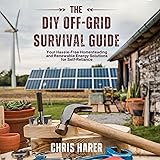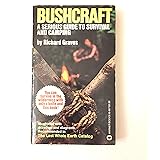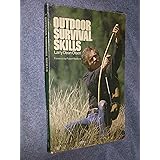Statistically, disruptions to critical infrastructure, including healthcare systems, become more probable during widespread emergencies. An estimated 60% of natural disasters significantly impede local medical services for days or weeks. Consequently, the establishment of a robust **prepper medical** facility within a secure basement environment is not merely prudent; it is essential. The video above provides a foundational overview of this critical subpart of preparedness. This accompanying article delves deeper into the intricacies of medical provisioning, advanced skill acquisition, and strategic planning necessary for comprehensive self-reliance during protracted crises.
Establishing the Foundational Prepper Medical Cache
A resilient medical infrastructure demands meticulous inventorying. Comprehensive planning is paramount for the self-sufficient unit. Furthermore, a systematic approach to supply acquisition ensures readiness. This approach extends far beyond rudimentary first aid. It encompasses specialized equipment and pharmaceuticals. The objective is prolonged medical autonomy. Such preparedness addresses diverse health challenges.
Beyond Basic First Aid: Advanced Trauma Kits
Basic first aid kits are invariably insufficient for severe trauma. Advanced trauma kits are specifically designed for critical injuries. Hemostatic agents are indispensable for severe bleeding control. Tourniquets must be readily available and correctly applied. Airway management devices, like nasopharyngeal tubes, prevent asphyxiation. Suture materials and staplers are also critical for wound closure. Comprehensive wound care supplies mitigate infection risks. Imagine if a severe laceration required immediate, definitive closure without professional medical assistance. A well-stocked kit enables such intervention.
Splinting materials are required for bone stabilization. Israeli pressure bandages are highly effective. Chest decompression needles may be considered by experts. Burn dressings are specifically designed for thermal injuries. Ophthalmic solutions address eye trauma. Sterile gloves and masks maintain aseptic technique. These components ensure that severe injuries are effectively managed. Serious complications can thereby be averted.
Pharmaceutical Inventory and Storage Protocols
A strategic pharmaceutical reserve is indispensable. Broad-spectrum antibiotics combat bacterial infections. Antivirals address specific viral threats. Pain management medication, both opioid and non-opioid, alleviates suffering. Anti-inflammatory drugs reduce swelling and discomfort. Gastrointestinal medications manage digestive issues. These drugs are critical for maintaining health.
Prescription medications for chronic conditions must be stockpiled. Such stockpiling requires careful consultation with prescribing physicians. Proper storage conditions are paramount for pharmaceutical integrity. Medications must be shielded from light, extreme temperatures, and excessive humidity. Regular inventory audits are crucial for expiration date management. Furthermore, a robust rotation system is implemented. This system ensures potency and prevents waste. A comprehensive **basement medical** supply must remain viable.
Essential Medical Skills for the Self-Reliant Individual
Possession of supplies without commensurate skills is inadequate. Medical knowledge and practical ability are intrinsically linked. Therefore, continuous training is non-negotiable. Practical application of theoretical knowledge must be prioritized. These skills allow effective utilization of the medical cache. They transform passive readiness into active capability.
Mastering Trauma Care and Minor Surgical Procedures
Wound debridement is essential for preventing infection. Proper irrigation techniques flush contaminants from injuries. Sterile suturing prevents wound dehiscence. Local anesthesia application is often necessary. Knowledge of abscess incision and drainage is also invaluable. Fracture reduction and stabilization techniques are critical for mobility. Imagine if a simple appendicitis required skilled intervention. The trained individual could potentially manage it. These procedures prevent sepsis and long-term disability. Such expertise is fundamental to **emergency medical supplies** deployment.
Burn treatment protocols must be understood thoroughly. Airway obstruction resolution techniques are life-saving. Hypovolemic shock management is also crucial. Knowledge of basic anatomy and physiology underpins all interventions. Practical drills reinforce theoretical learning. Repetition builds muscle memory and confidence. Competency ensures effective patient care during crises.
Public Health and Sanitation in a Contained Environment
Disease prevention is prioritized within any confined group. Stringent hygiene protocols prevent nosocomial infections. Hand sanitization is always reinforced. Waste management systems must be robust and sanitary. Water purification for medical use is absolutely critical. Imagine if potable water became contaminated, impacting wound care. Disease vectors must be controlled. These measures preserve the health of the entire group. Public health considerations are foundational for long-term survival.
Quarantine protocols are also essential for infectious disease containment. Personal protective equipment (PPE) must be readily available. Disinfectants are used routinely for surfaces. Ventilation systems play a role in air quality. Food safety practices prevent gastrointestinal illnesses. Proactive measures minimize illness prevalence. They ensure the operational integrity of the medical team.
Specialized Medical Considerations for Long-Term Scenarios
Specific demographic needs often emerge in extended crises. Acknowledgment of these diverse requirements is crucial. Therefore, specialized medical provisioning becomes necessary. Standard kits often neglect these critical areas. Comprehensive planning addresses the needs of all group members. This ensures equitable care for everyone. It enhances the overall resilience of the unit.
Dental Emergencies and Oral Hygiene Solutions
Dental pain can be debilitating without intervention. Basic dental tools facilitate temporary fillings. Extraction forceps may be required for severe cases. Topical anesthetics alleviate acute pain. Oral antibiotics address dental infections. Fluoride treatments maintain long-term oral health. Imagine if a severe toothache rendered a group member incapacitated. Such a scenario demands preparation. A dedicated dental kit prevents preventable suffering. It supports the group’s overall operational capacity.
Dental hygiene supplies, including specialized brushes and floss, are critical. Toothache drops provide temporary relief. Dental cement allows for provisional repairs. Knowledge of basic oral examination is beneficial. Prevention of dental issues is always emphasized. Regular inspections identify potential problems early. This proactive stance reduces future emergency interventions.
Obstetric, Pediatric, and Geriatric Medical Provisioning
Obstetric care requires specialized kits. Birthing supplies, including sterile drapes and clamps, are essential. Infant formula and pediatric medications are critical for young children. Dosage calculations must be precise for pediatric patients. Geriatric patients require specific prescription drug inventories. Mobility aids and specialized wound care for the elderly are also important. Imagine if a pregnancy progressed to full term in a self-reliant environment. Such preparedness is critical. All age groups require specific considerations. These provisions reflect a comprehensive medical strategy.
Vaccination records and schedules must be maintained for children. Diabetic supplies for insulin-dependent individuals are vital. Cardiovascular medications must be managed diligently. Specialized diagnostic tools, like glucometers, are important. Mental health support resources are also often overlooked. Comprehensive planning ensures no demographic is neglected. It reinforces the ethical backbone of the prepper community.
The Strategic Role of Medical Documentation and Training
Knowledge is as valuable as any physical supply. A robust medical library provides critical reference. Furthermore, continuous training hones essential skills. These intellectual resources empower the medical team. They ensure informed decision-making during crises. Preparedness transcends mere material accumulation. It includes intellectual and practical competence.
Compiling a Comprehensive Medical Reference Library
Diagnostic manuals are invaluable for symptom identification. Pharmaceutical reference guides detail drug interactions and dosages. Surgical textbooks illustrate advanced procedures. Herbal and alternative medicine guides offer supplementary treatments. Survival medicine texts provide context for austere environments. Digital copies, stored securely, offer accessibility. Imagine if a novel ailment presented without prior experience. A comprehensive library supports rapid diagnosis. This resource is integral to any advanced **prepper medical** strategy.
Patient medical history files must be meticulously maintained. Emergency contact information is kept current. Detailed inventory logs track all supplies. Training manuals for specific procedures are included. Anatomical charts aid in understanding injury locations. This documentation streamlines medical operations. It ensures consistent and informed care delivery.
Continuous Medical Education for the Prepared Unit
Regular practice drills reinforce learned skills. Scenario-based training prepares for real-world events. CPR and advanced first aid certifications are foundational. Basic Life Support (BLS) and Advanced Cardiac Life Support (ACLS) are highly recommended. Wilderness First Responder (WFR) courses provide relevant expertise. Imagine if a complex medical emergency required coordinated team response. Continuous training ensures proficiency. It transforms individuals into a cohesive medical unit. Such dedication defines true **emergency medical supplies** readiness.
Cross-training ensures redundancy within the medical team. Simulated patient care builds confidence and competence. Review of medical protocols keeps knowledge fresh. Peer assessment fosters improvement. Learning from mistakes in a controlled environment is invaluable. This ongoing education maintains a high level of preparedness. It solidifies the foundation of any **basement medical** operation.











